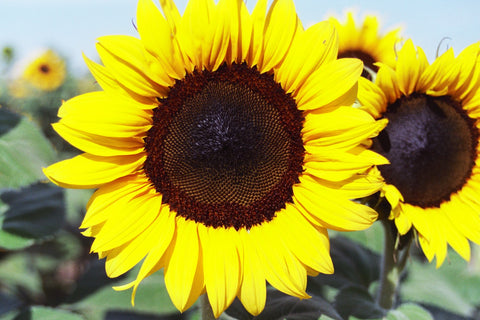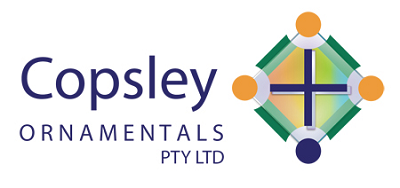General Features of FleuroSun Hybrids
GENERAL PARAMETERS OF FLEUROSUN HYBRIDS:
PLANT HEIGHT: FleuroSun sunflowers come in 3 height ranges, normal or standard 110-140cm, Compact 70-90cm and Dwarf 25-40cm.
FLEUROSUN "Standard" hybrids are of normal height for sunflowers, between 110 to 140cm tall, traditionally grown for cut-flowers and in gardens.




COMPACT FleuroSun hybrids are 70-90cm height and have shorter, stocky plants, with reduced internode spacing between leaves. They retain excellent leaf areas and head sizes, whilst branched plants make excellent displays. FleuroSun Compacts can be planted from seeds or seedlings, and are suitable for both cut-flowers and in gardens.





DWARF FleuroSun hybrids are 25-40cm high when grown in pots and 30-45cm in gardens. They have short internode gaps between leaves, strong roots and stems, good leaf areas, good primary head sizes, good branching habits and rounded, hardy petals - making them ideal for growing in pots, garden borders and displays, when planted from seeds or seedlings.







BRANCHING HABIT: Unbranched FleuroSun hybrids Classic Gold, Classic Orange, Landscape & Monarch plus newer Ice Lady & Classic Lime have single stems with large head, and are suitable for both cut-flowers and gardens.



Branched Fleurosun hybrids include Summer Spray, Gold Spray, Orange Spray, Sonnet, Garnet, Ice Spray, Calypso Spray, Lilac Spray & Mauve Spray - they have multiple stems and heads and extended flowering periods, making them ideal in gardens and urban display areas.

HEAD CENTRES: Our FleuroSun hybrids cover a range of colours in the head centres and in the petals. Head centres (disc florets) of traditional sunflowers are green, such as with Landscape, Summer Spray, Ice Lady & Ice Spray, but dark centres as in Classic Gold, Monarch, Orange Spray, Garnet & Mauve Spray provide a strong contrast with petal colours. The dark centres are disk florets with purple anthocyanin seed coats. Wild sunflowers originated in southern USA / northern Mexico and seeds were a valued food source to the native Americans whilst the purple colour of some seeds was a useful dyestuff.
PETAL COLOURS: derive from a base yellow colour, a recessive lemon colour, the presence or absence of red genes, and colour intensifiers. Orange is a deeper version of yellow and provides an extra contrast, with both green and purple head centres, as in Classic Orange & Orange Spray. The light rust rings in Monarch & Sonnet hybrids are on yellow background, and are an attractive variation to the base yellow colour. Garnet has much more intense rust-chocolate colour in its petals and is a spectacular addition.


Lemon colour is recessive to yellow and an attractive alternative - both with green centres (Ice Lady, Ice Spray) and dark centres (Classic Lime, Calypso Spray). The red genes on lemon background result in the lilac rings of Lilac Monarch & Lilac Spray, whilst Mauve Spray has burgundy-red to mauve petals and is the lemon equivalent of Garnet. Some lemon petals have a peachy tinge, which give autumn-shade variations to Peach Lilac Spray and Peach Mauve Spray.


PETAL SHAPE: Copsley Ornamentals selects lines and hybrids with overlapping, rounded and resilient petals, rather than the elongated, straight or narrow petals of many sunflowers. These parameters add to the appearance of the flowers, including to give a velvety lustre, are very desirable for enhanced storage and transport of cut stems, and are usually associated with enhanced petal life - in the garden, after harvest of cut flowers and in the vase.

POLLEN-FREE TRAIT: In sunflowers, pollen-free flowers are derived using cytoplasmic male sterility, linked to mitochondrial RNA in the maternal (seed) parent; they have normal female stigmas but lack viable anthers.
The pollen-free trait is beneficial for people who suffer from pollen allergies, ensures no pollen smell, avoids pollen-staining and enhances the petal life of flowers - in the garden, in vases after harvest and for enhanced transport and storage of cut-flowers. Flowering heads are still attractive to nectar-collecting bees, which are the majority of bees seen on sunflowers.
The absence of anthers means that female stigmas can only be pollinated with external pollen and any resultant seed won't breed true.








